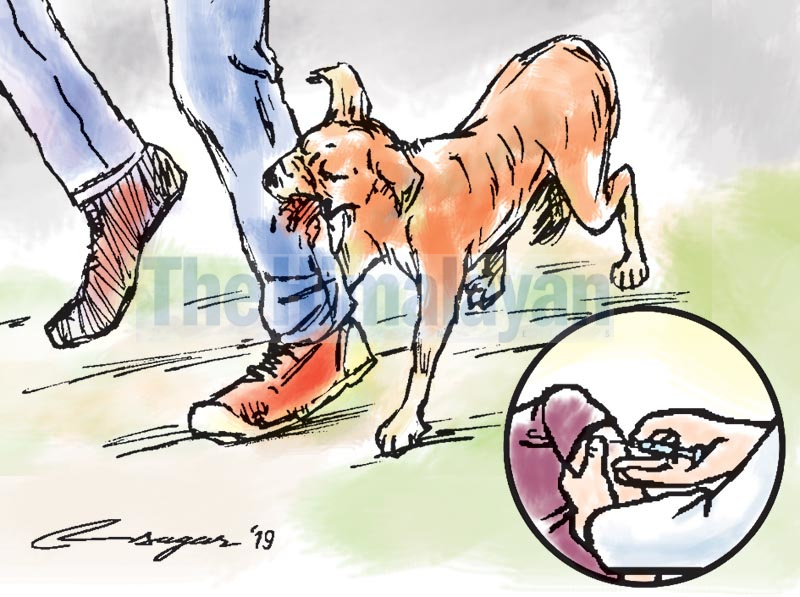Education necessary to eliminate rabies
Kathmandu, July 29
Despite the government’s free provision of rabies vaccination, many people lose their lives each year due to the disease.
According to the data provided by Sukraraj Tropical and Infectious Disease Hospital, 19 cases of rabies were diagnosed in the hospital in the fiscal 2018-19.
The number of patients taking rabies vaccines has also been rising in the hospital for the last few years. Patients visit the hospital to take rabies vaccination after being bitten by dog, monkey, cat, cattle and rodents.
Comparative figures
Year
2013-14
2014-15
2015-16
2016-17
2017-18
2018-19 (Till May 15)
Number of people receiving vaccination
23,618
20,468
22,046
29,309
30,328
25,040
According to Epidemiology and Disease Control Division, it is estimated that the annual incidence of human rabies is around one hundred across the country.
Many human rabies cases are not admitted, or patients don’t seek medical advice. The number of animal bite cases has fluctuated over the past few years. It is estimated that around 50,000 people seek post-exposure prophylaxis in Nepal.
According to World Health Organisation, dogs are the main cause of human rabies deaths, contributing up to 99 per cent of all the rabies transmissions to humans. People are usually infected following a deep bite or scratch from an animal inflicted by rabies. Transmission can also occur when the infectious material – usually saliva – comes into direct contact with human mucosa or fresh skin wounds.
Anup Bastola, consultant tropical medicine physician at STIDH, said people are ignorant and unaware about rabies. Many people come to the hospital only after they develop symptoms of rabies. They visit the hospitals with signs of hyperactivity, excitable behaviour, hydrophobia (fear of water) and sometimes aerophobia (fear of drafts or of fresh air).
Despite the animal’s bite, many patients usually ignore post-bite vaccination. There is lack of education about viral infection. That’s why people are losing their lives to the preventable disease, said the doctor.
After the dog bites, people should take anti-rabies vaccination as soon as possible so that the vaccine can become more effective. The vaccine is given to neutralise the virus, said Bastola.
Stakeholders working to prevent rabies infection say that education on dog behaviour and bite prevention is necessary among children and adults.
Agriculture and Livestock Department’s records reveal that there are 82,000 stray dogs in the capital. Of them, over 7,840 dogs have been vaccinated.
Though we are working to help prevent rabies by vaccinating and sterilising dogs, the campaign should be extended across the country. Until and unless all the concerned local bodies and the government work effectively, it will be difficult to eliminate rabies.
Rabies prevention should be in the priority list of the government, said Hari Bahadur Bhandari, Chief of Agriculture and Livestock Department, Kathmandu metropolis.
WHO has set a target to eliminate dog-transmitted rabies by 2030. WHO, the World Organisation for Animal Health, Food and Agriculture Organisation of the United Nations (FAO), and the Global Alliance for Rabies Control (GARC) have established a global ‘United Against Rabies’ collaboration to provide a common strategy to achieve ‘zero human rabies deaths by 2030.’
“Rabies elimination is possible, but it’s challenging,” said Bastola. People should be aware of dog bite and should immediately take vaccines after dog bite. The local bodies and health sectors should work in tandem to lessen the number of dog bites.






